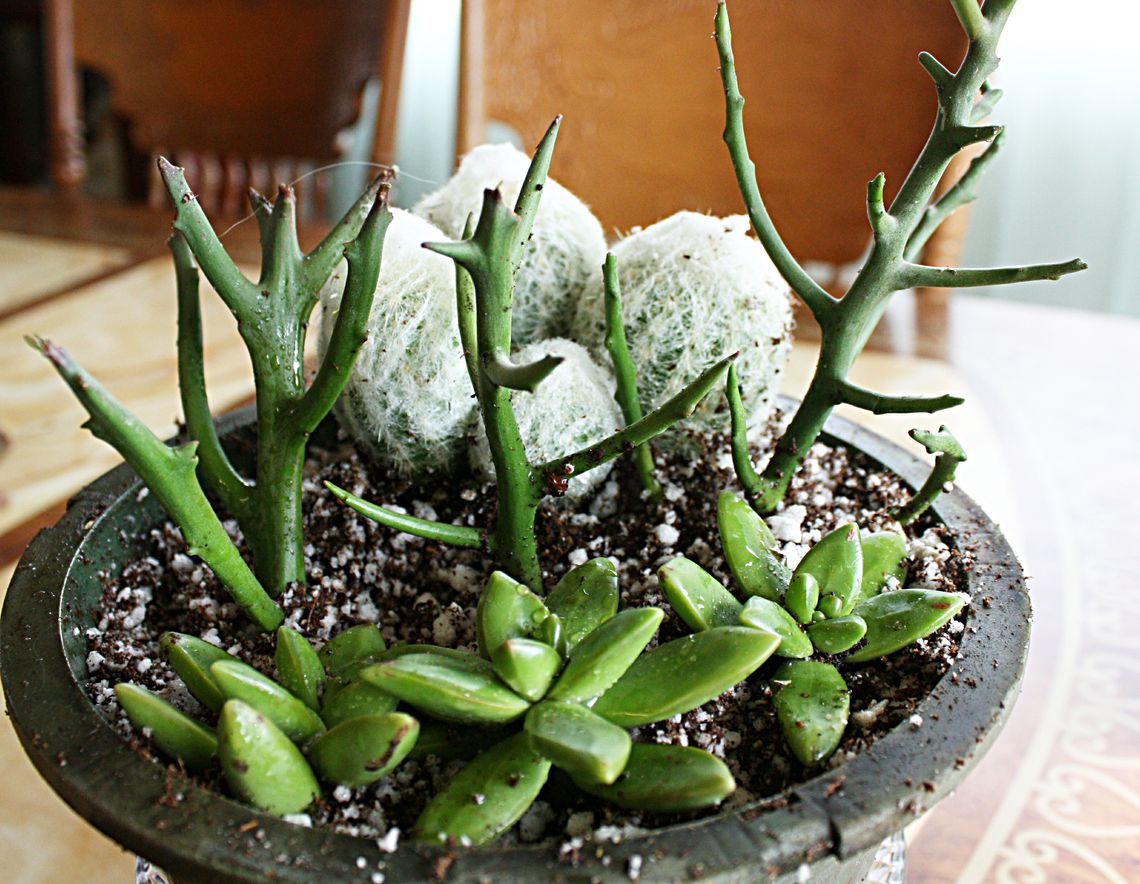By Edith Isidoro-Mills —
Perhaps you didn't get flowers for Valentine's Day but instead received a succulent garden. Many people believe these are easy to care for houseplants and they can be if you know how to care for them. The wrong kind of care can result in "loving them to death.” The right kind of care is easy if you know what type of care succulents need.
The temptation for most people is to give succulents to leave them in the peat based potting soil they came with. That may be okay for a while if you don't water them at all but succulents do need water eventually. The problem with peat based potting soils is they hold water for too long and succulents don't do well if their roots are kept wet. Peat has a tendency to hold water and keep roots wet. The best type of soil for succulents is one made up of relatively large particles like pumice and chunks of bark and course sand. This will allow water to reach the succulent's roots and then drain off quickly.
Pots with drain holes are preferable to dishes without holes. To keep your table or plant shelf dry put a tray under the potted succulent garden. Remove all water that has drained into the tray shortly after watering the succulent garden so that pot is not sitting in water. Succulent gardens need to dry out between watering so usually no more than once a week watering is required.
Light is another critical requirement of succulents. The succulents that are sold as houseplants are usually more shade tolerant than those sold for your outdoor garden. Still, that is only relative and succulents as houseplants require more light than most other houseplants. The best location for succulents indoors is a south facing window that gets light most of the day.
The succulents sold as houseplants in our area are not hardy outdoors. They will not tolerate temperatures below 40°F or the extreme heat we can have in the middle of summer. As I mentioned above, these succulents in their native outdoor environment tend to be more shade tolerant than the succulents sold for our outdoor gardens and our intense summer sun could actually be too much.
Unlike most other houseplants, indoor succulents don't need to be fertilized. Excess nitrogen causes succulents to become leggy and weak. This makes them more susceptible to pests and diseases.
If you decide to create an indoor succulent garden, only select succulents you find in the houseplant section of your garden center or at a florist shop and follow the instructions above. If you recently acquired an indoor succulent garden remember to not "love it to death" by over watering or fertilizing it. Indoor succulents can last years with little fuss and add interest to your indoor environment.









































Comment
Comments